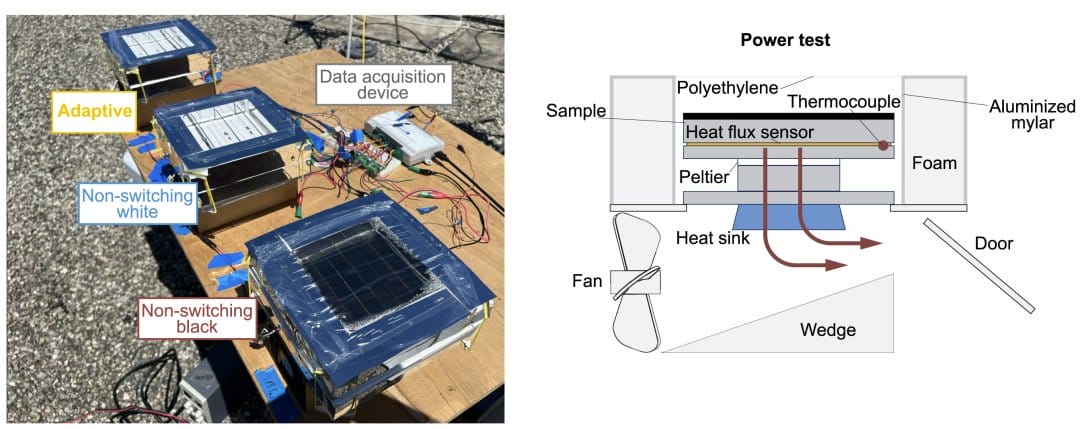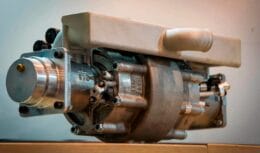
US researchers have developed a new tile that eliminates the need for air conditioning. Being up to 3,1x more efficient, promising to save energy at any temperature.
Approximately half of the electricity consumed in large buildings is used for air conditioning in the summer and heating in the winter, a number that will likely increase as urbanization increases and global temperatures rise. In response to this, several initiatives have been developed to save energy, including use of refrigeration ceramics, thermal paints, and passive radiative cooling techniques. These approaches seek to dissipate heat directly into the cold of space. Recently, scientists took a step forward in this field with the development of a new adaptive tile that works like an air conditioner, but without consuming electricity.
Prototype of the new tile measures 10 cm³
charles xiao and other scientists from University of California Santa Barbara, in the USA, have now developed an adaptive tile that, when implemented in homes, can save energy and reduce heating bills in the winter and cooling bills in the summer without the need for electronic equipment.
As the model is modular, the material can also be used as a tile for wall cladding. According to Xiao, the new tile that works as an air conditioner alternates between a heating and a cooling state depending on the temperature of the tile. The target temperature is approximately 18 °C.

Image: Charles Xiao et al
The specific temperature was chosen based on the climatic conditions of the Northern Hemisphere, however it can be changed to the average temperature of other regions. The prototypes of the new tile, which eliminates the use of air conditioning, are small, approximately ten square centimeters, acting as a passive thermoregulatory device, a mobile surface that can change its thermal properties in response to a range of temperatures.
Tests have shown that they can save energy for cooling by 3,1 times and heating power by 2,6 times compared to non-switching devices covered with conventional reflective or absorbent coatings.
Find out how the new tile developed to save energy works
The heart of the thermoregulating tile is a wax motor, a linear actuator that converts thermal energy into mechanical energy, exploring the phase change behavior of waxes. Based on the change in wax volume in response to the temperatures it is exposed to, a wax motor generates pressure that moves mechanical parts, translating thermal energy into mechanical energy.
These devices are commonly found in various appliances, such as dishwashers and washing machines, as well as more specialized applications, such as aerospace industry.
In the case of the new tile (or tile), which promises to eliminate the use of air conditioning and save energy, depending on its condition, the wax motor can push or retract pistons that close or open shutters on the tile surface.
This way, in colder temperatures, while the wax is solid, the shutters are closed and flat, exposing a surface that absorbs sunlight and minimizes heat dissipation through radiation. But once temperatures reach around 18°C, the fence begins to melt and expand, opening the shutters and exposing a surface that reflects sunlight and emits heat.
Device is not yet expected to hit the market
During the melting or freezing process, the wax also absorbs or releases a large amount of heat, further stabilizing the temperature of the tile and building.
Because it works with a wax motor, no electronic components, batteries or external power sources are needed to operate the tile.
According to team member Elliot Hawkes, the device is still a proof of concept and is still a long way from reaching the market, but the expectation is that it will lead to new technologies that could one day have a positive impact on buildings' energy costs.











